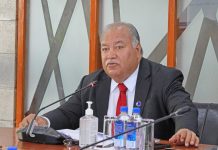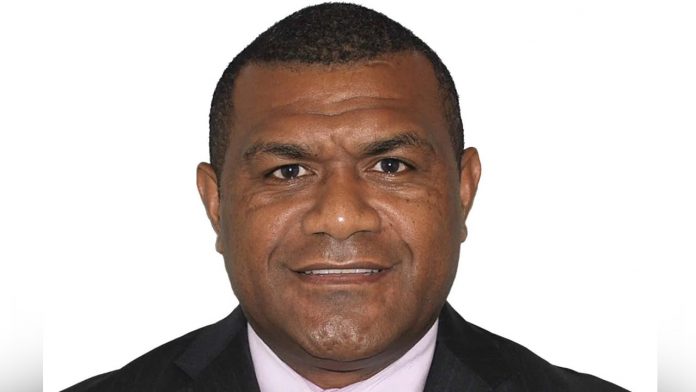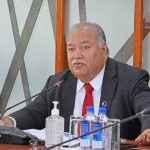By Kemueli Naiqama, former Fiji Bureau of Statistics chief
I note that there has been much debate since the release of the 2019-2020 Household Income and Expenditure Survey on the Fiji Bureau of Statistics Website www.statsfiji.gov.fi. The Minister of Economy, Aiyaz Sayed Khaiyum made a statement regarding the report on Tuesday evening 14th September 2021. I wish to set the record straight and to clarify the issues relating to the publication of the HIES Report so that Fiji can understand why this report was released for public consumption. This is an honest, clear and realistic snapshot of the poverty situation in Fiji according to internationally accepted standards and categories, and nothing else.
Survey Budget Re-Adjustment
It is important to note that the Fiji Bureau of Statistics (FBS) was still able to conduct the survey, process, analyze and publish the 2019-20 HIES Report despite the 40 percent reduction in its 2019-20 budgetary allocation. As a result, most Established Staff who are Supervisors had to forego their overtime meal entitlements and subsistence allowances, despite them having to attend evening and weekend interviews with their Enumerators depending on the time preferences of the survey participants. I commend the staff for their full commitment to their duty despite the lack of resources.
Enumerators’ Training
In any survey by the Statistics Office, there are always two phases.
First is the vigorous preparation phase and second is the implementation (Data collection, Analysis and Reporting) phase.
During the preparation phase, after the nomination of enumerators following the Open Merit Recruitment System (OMRS), they undertake two weeks of training to understand the purpose of the survey, the different thematic areas/modules of the questionnaire, the linkage between thematic areas of the questionnaire, and why such questions are included in the questionnaire. Additionally, they learn about the linkages of such questions to the Global, Regional and National Indicators e.g. SDG Goals, SAMOA Pathway and the National Development Plan. The enumerators during the training sessions do several pilot testing of the questionnaires to familiarise themselves with the survey tablets, measure the effectiveness of the questions, flow of questionnaires, time taken for an interview, identify modules, topics and questions that may pose some difficulties for the Enumerators. They learn about other gaps in the questionnaire such as correct interpretation and definitions to ensure the quality of responses received from the survey participants. In addition, there was also a one week allocated for the Training of Trainers (ToT) to ensure that training materials and deliverance are consistence across our Regional Offices.
Methodology and Sampling
It is important to note the sampling methodology used in the 2019-20 HIES is well recognised internationally and also applied by other Pacific Island National Statistics Offices (as endorsed by the Pacific Statistics Methods Board, of which I am a member) for comparable purposes. In addition, the 2017 Census was only used as a frame to randomly select the 600 Enumeration Areas only. All sample surveys will use the Enumeration Areas (EA) from the latest Census data where all population were counted and, in this case, the 2017 Population and Housing Census. The purpose of the sample is to draw inferences on the population, i.e. the data is generated from a random sample size from the population of interest.
2017 Census Specification for Sampling
A Two-Stage, Stratified, Probability Proportional to Size, and Systematic sampling was used to select the 6,000 households. In the first stage, the sampling of the selected Enumeration Areas are sorted by geographical position. Sorting by Division and by strata (urban/rural). This is the Probability Proportion to size (PPS) sampling method where the more the number of households in an enumeration area, the higher the chances of being selected. This is how the 600 sample Enumeration Areas were selected for the 2019-20 HIES survey.
In the 2nd stage, a systematic sampling method was used in which all households in the selected enumeration areas were interviewed to provide the following information: number of people residing in each household; name and relationship to Head of the Household; the sub population group; address of Household; sex; age, and residency status.
From the information collected above, the 10 households were then randomly selected in each Enumeration Area using the systematic sampling method as follows: Households were sorted by size and subpopulation group; Total households in the Enumeration Area were divided by the 10 households to derive the sample interval; Random number (start) was then selected from the random tables provided; and once the random number is selected, the random interval is used to select the 10 households. The above process is repeated in all the selected 600 Enumeration areas to arrive at the 6,000 households.
The HIES 2019-2020 estimated population was based on the household population at the time of the survey and therefore excluded the population of those living in non-private dwellings. Non-private dwellings (NPDs) are outside the definition of households used in the survey. Therefore, the HIES 2019-2020 estimated population of 864,132 was expected to be lower than the 2017 population census estimates of 884,887.
The survey had to be undertaken for one whole year so that we are able to observe and measure the consumption pattern of households in Fiji. These include the preferences and choices people make with regard to their consumption, whether for food or non-food items. For non-food items, the activities that the household intend to commit are explored to understand the reasons why it is placed above or below the Basic Needs Poverty Line.
World Bank and Bristol University Validation
To quantify and validate the effectiveness of any survey result, is the role of any Statistical Agency including FBoS to engage itself with any credible organisation that has expertise to verify its survey results and analysis. In this HIES 2019-2020 survey, we opted for the World Bank and Bristol University of UK for these reasons. The World Bank offered to assist the Statistics Office with regard to issues pertaining to Reducing Poverty and Inequality, whilst Bristol University of UK agreed to assist with producing the multidimensional poverty estimates using the consensual deprivation method, which incorporates the views of a representative sample of the Fijian population into the measurement of poverty. This therefore produces estimates of poverty and deprivation that are both statistically sound and socially realistic, validated by two prestigious institutions.
In addition, we engage with the two institutions so that our officers can further strengthen their analytical skills and enhance their understanding of poverty related issues.
Published HIES Report
This HIES Report is a poverty report which provides the characteristics and the contributing factors/variables of poverty. The report is not about race, but about providing transparent and independent disaggregated official statistics for all users.
The report and results are designed to provide users of statistics/policy makers with the high quality information they need to help design efficient and effective anti-poverty policies.
Conclusion
This is statistical report on poverty and one needs to wear a ‘statistical lens” to understand how to tackle poverty related issues. We cannot pickup on one or two variables (like race and religion, separately from other issues, and think that one is addressing/dealing with poverty. Poverty is multidimensional and should be tackled accordingly. I have discharged my responsibility as a trained statistician to the best of my ability, without fear or favour and as a neutral civil servant.
We have to embrace all contributing variables of poverty and collectively allow all stakeholders, whether it’s Government, Private Sector, Civil Society Organisations, Religious Bodies, or International Agencies – to identify their responsible thematic areas, provide the necessary budgetary allocation and intervention programmes to reduce and eliminate poverty. This way we all contribute in achieving SDG Goal 1 “No Poverty” and the global theme of ‘Leaving No one Behind’ as Fiji becomes a healthy and wealthy nation come 2030.
When one gets sick – consult a doctor.
When one has a toothache – consult a dentist.
When one wants to understand statistics – consult Statisticians – the data experts.
SOURCE:KN/PACNEWS















